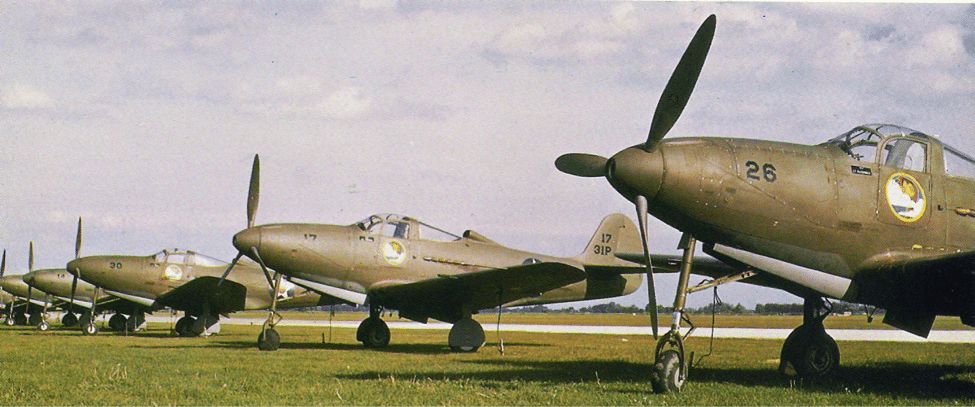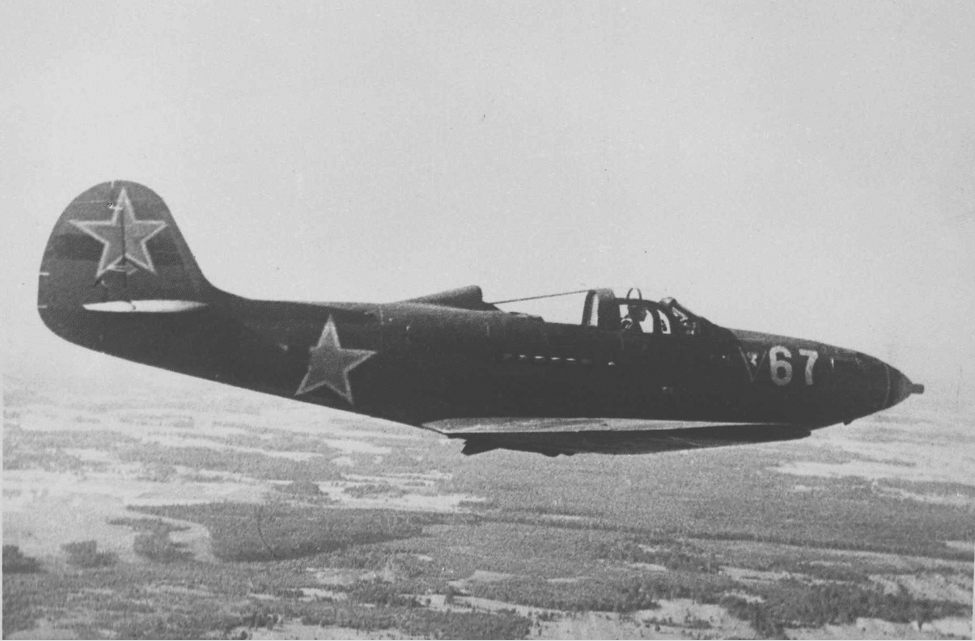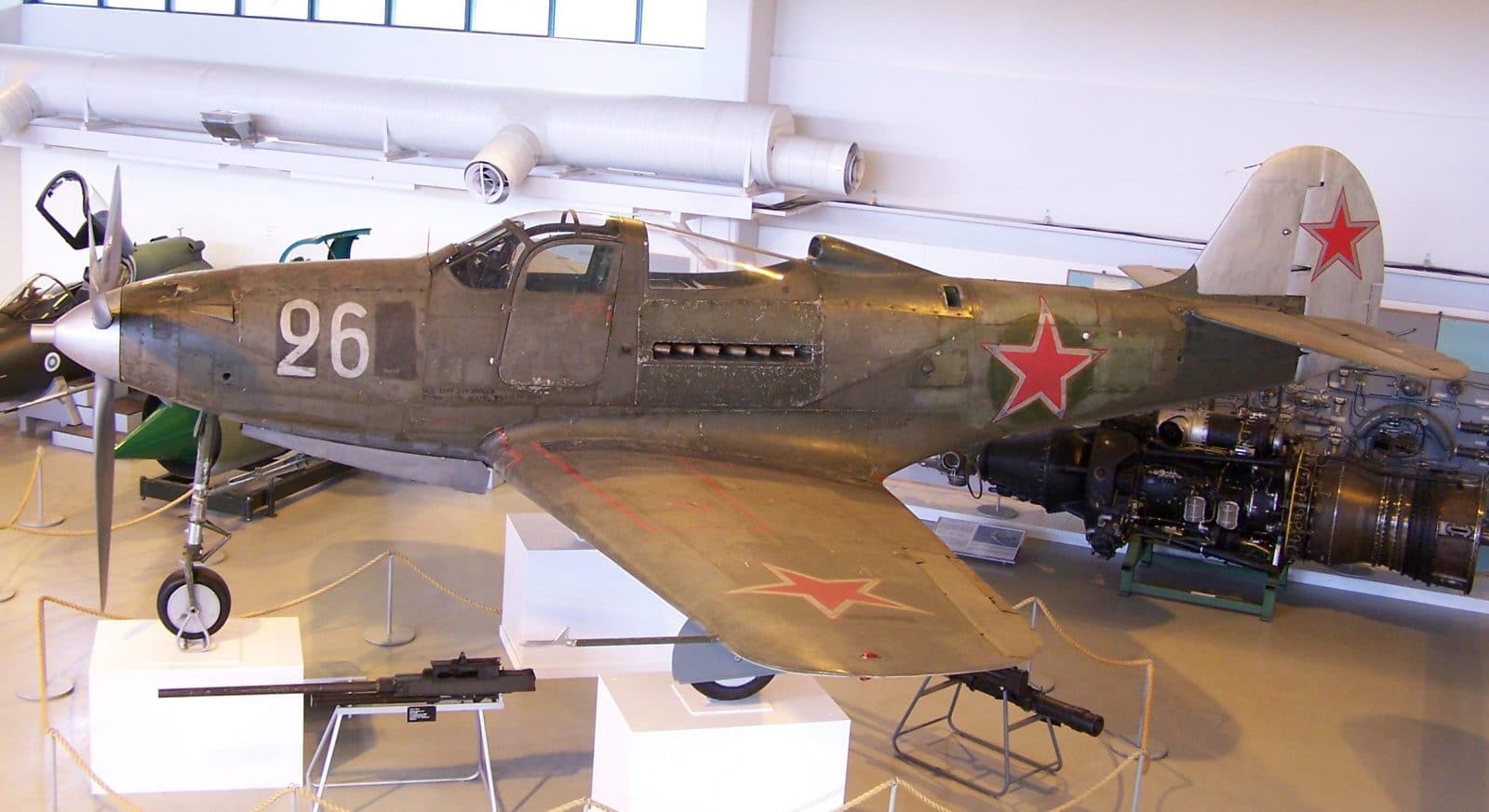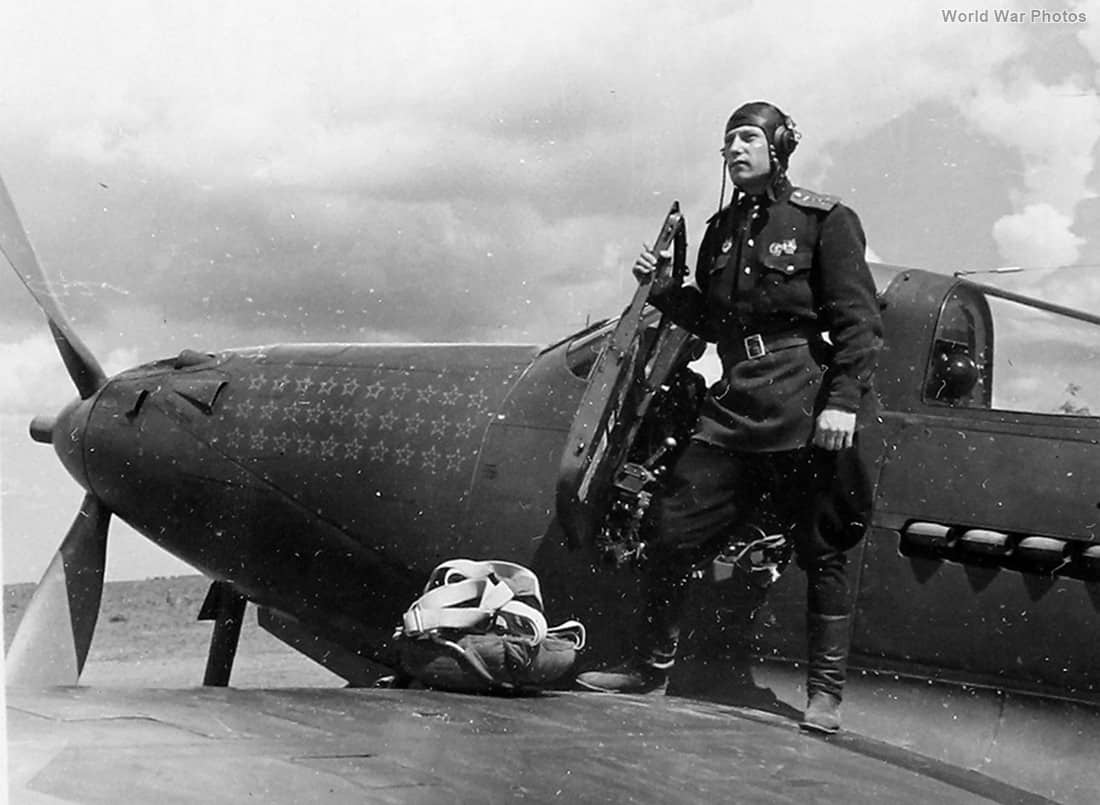I Don’t Want Her, You Can Have Her
Britain, starved for additional aircraft after the drain of the Battle of Britain, ordered 386 P-39Ds in September 1940. The Brit Airacobras had a 20 millimeter cannon mounted in place of the 37 millimeter but in most other respects the P-39s were standard D models.
Even though they eventually ordered 675 P-39s (all variants), the British quickly realized that the plane just wouldn’t do what they needed it to do in European air combat against the German Luftwaffe.
Used in a single attack against barges in occupied France, the P-39 had a remarkably short run with the Brits. They transferred 202 of the P-39Ds to Russia. The USAAC, also starved for fighter aircraft after the war started, held 200 of the British aircraft back and re-designated them P-400. The British did not protest. Some of these, along with many of the P-39s manufactured by that point, were sent to the Southwest Pacific for service with the 5th Air Force against the Japanese.

Finding Uses and Usable Tactics
The P-39s and P-400s performed their best below 12,000 feet. That was no secret. However, the Airacobras were able to hold their own against the vaunted Japanese Zeros by employing the same successful tactics used by other Allied fighters of the day.
Especially effective in the ground attack role, the aircraft served with the Cactus Air Force on Guadalcanal and throughout the Solomons as well as New Guinea. One unintended benefit to the Navy was that derelict P-39s donated their 37 millimeter cannons to quite a few of the P.T. boats operating in the area. But due to the same range and altitude limitations experienced elsewhere, the P-39s were hamstrung in the theater.
P-39s saw their first combat on 30 April 1942. Even though it has been said that the Zero was far superior to the P-39, combat records indicate that during the frequent combat between the types that took place during 1942, the P-39 was not strictly outclassed in its element- below 12,000 feet.

Flown by the Redtails
Combat involving American P-39s also took place in the Aleutian Islands and the Mediterranean, albeit briefly. The famous 99th Fighter Squadron “Tuskegee Airmen” flew the P-39 for a few weeks in 1944.
P-39s were used for maritime patrol of the Mediterranean from North Africa and later Italy. P-39s were also utilized in Hawaii for quite some time as interceptors. Roughly halfway through the war, America had relegated the majority of the P-39s to training and coastal reconnaissance roles. P-39 production continued though…because there was still at least one allied nation that wanted every last P-39 they could get their hands on.

Here You Go…Comrade
The Red Air Force (the Russian words boil down to VVS) received 4,719 P-39s —nearly half of all P-39s produced and a third of the total number of all Allied fighter aircraft supplied to the Russians.
The majority of the P-39s used by the Russians were the improved N and Q variants, which meant that the aircraft’s limitations were offset to some extent by improved systems and armament. The first thing the Russians did to their new P-39s (after dubbing them “Little Cobras”) was remove the wing-mounted machine guns to lighten the airframe and improve its maneuverability.
The air war in Russia was tactically different than elsewhere. It was fought primarily below 12,000 feet. The Russians used their P-39s where they performed their best, and they got results. But a common myth holds that the Russians busted tanks with the P-39.
Two factors made that a practical impossibility. The first was that they were not supplied with enough armor-piercing ammunition for the 37mm cannon to make a living of busting tanks. The other reality is that the armor-piercing round itself was not effective against the German tanks of the day.
The Russians had plenty of high-explosive rounds for their Little Cobras, and they used them with devastating effectiveness against ground targets and German troops. And they shot a few of them at German aircraft, too.

Outscoring the Best Americans With a Fighter We Didn’t Want…or Need
Russian VVS pilots operated the P-39 from August 1942 through to the end of the war. Not commonly known is that the Lockheed P-38 Lightning and the Grumman F6F Hellcat were not the American-built fighters flown by the highest-scoring aces of World War II. That distinction belongs to the Bell P-39 Airacobra in the capable hands of several of the top Russian aces.
The leading overall Russian ace, Aleksander I Pokryshkin, scored 59 total victories. Forty-eight of them were scored in P-39s. The Russian ace with the most kills in P-39s was Gregoriy Rechkalov, who scored 50 of his total 56 kills in P-39s. Five of the top ten Russian aces flew P-39s. Russia produced 28 aces with at least 15 victories, and eight of them scored at least 30 victories —an impressive tally, no matter what aircraft the pilots were flying.
Contrast this with the one and only American P-39 ace (William Fiedler). The last plane shot down by the Luftwaffe was a Russian P-39, and the last Russian aerial victory of the war was scored by a P-39. 1,030 Russian P-39s were lost (to all causes) during World War II. P-39s served with the VVS through 1949. Operators of the P-39 Airacobra include Australia, Free France, Italy, Poland, Portugal, Russia, the United Kingdom, and the USAAC.

Epitaph for the Airacobra
When Pearl Harbor was attacked, there were roughly 600 P-39s in service. When Bell stopped building P-39s during August of 1944 in order to more completely focus their attention on their first jet fighter design (The P-59 Airacomet), 9,558 P-39s (all variants) had been produced.
There was a range of variants with changes to engines, propellers, armaments, protective armor configurations, and even cameras, allowing the P-39s to perform aerial photo reconnaissance. Just about the only things they didn’t try changing on a P-39 were changes to the rugged construction of the airplane and its single-speed, single-stage supercharger. But they did produce a larger cousin, the Bell P-63 King Cobra…but that’s another story.

My wife’s grand father was instrumental in the design of the P39.
My grandfather was trained in the p-39. He was sent to England with the 9th Air Force where they received p-51B’s. Their main job was ground attacking around France. He told me that with the Cannon/ machine gun mix and the low altitude that he liked the P-39 better. Above 10,000 ft he was all Mustang!